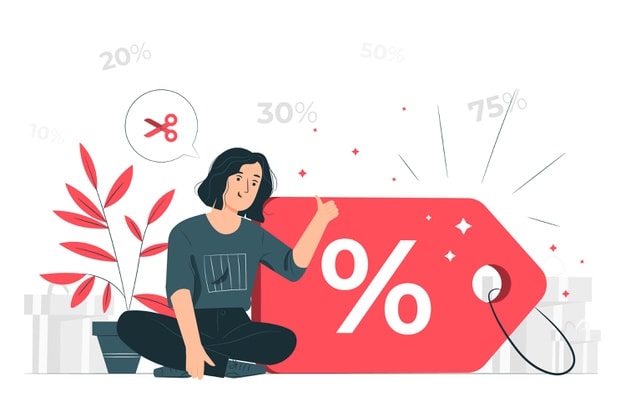Distributive bargaining can be defined as a scenario where two or more parties try to divide a fixed resource. The process of distributive bargaining usually happens competitively. In the end, the party that ends up getting the highest share of the resource is declared a winner, and the party that receives the least value is declared a loser.
Table of Contents
What is Distributive Bargaining?
In the business world, several situations arise where partners are required to divide the fixed resources that they have shared before or have earned through a business. The goal of each party is to gain maximum share. Thus, conflicts arise among the parties taking part in distributive bargaining. Because of this, distributive negotiation strategy is also called “win-lose bargaining” or “claiming value” or “zero-sum bargaining.”
The need for distributive bargaining arises when the resource is in a fixed amount, and there is no scope of expanding it. The distributive bargaining is the same as dividing a pie or slicing up a pie.
In business terms, distributive bargaining mainly used to tackle issues like minimum price and money. In the bargaining process, both parties intend to convince the other party to choose the way that will be beneficial for them.
However, the bargaining process is further complicated by the reservation point of each individual taking part in the integrative negotiation. The reservation point can be referred to as the least favorable point of each individual where they might get agreed to accept the deal or terms of negotiation.
Therefore, each party involved in the bargain tries to figure out the others’ reservation points so they can present a deal that is closest to the reservation point of the other party. In this way, they also make sure that they don’t end up going too far from the opponent’s reservation point.
The process of distribution bargaining ends with one party settling for the loss and another party getting the benefit from the deal.
Importance of Distributive Bargaining Strategies
In the business world, alliances and dissociations happen frequently. In both scenarios, each partner intends to get the maximum benefit from the deal. When people get into a partnership, they are hopeful and plan to make the most out of the alliance.
However, when disassociation happens, things get bad, and each party makes sure that it should not be the one that faces losses. But not all parties can be a benefit, and loss of one is bound to happen.
Distributive bargaining tactics holds great importance in the business world. Several issues can’t be settled without making the use of distributive bargaining. One of them is the distribution of resources. Through distributive bargaining, labor negotiations takes place among the parties involved.
Each party involved in the distribution process tries to learn the other parties’ expectations and try to negotiate based on that information. Through distributive negotiation, even though they cannot distribute the resource in equal share. But they can make sure that one gets that they desire the most. In this way, even if a party gets less share from the distribution process, they will be happy from the distribution as they get what they wanted.
Disadvantages of Distributive Bargaining
Even though effective bargaining strategies has been used in the business area for a long time, it is still not free from disadvantages. The following are a few disadvantages of distributive negotiations that make it a wrong choice for distribution purposes.
- Distributive bargaining is unnecessary. The core principle of distributive bargaining is that there always will be a win-lose situation. If one party wins, then the other party is bound to lose. In distributive bargaining, it is assumed that there is no scope of expanding the pie. However, this is not true. If partners want, they can expand the pie. They can make sure that all the parties involved in the distribution process get an equal share. The method of distributive bargaining can be replaced by integrative bargaining. So that conflicts can be shared through cooperation.
- Another disadvantage of distributive bargaining is that it might lead parties to take destructive actions. The relationship between parties gets affected as both parties focus too much on their differences rather than trying to make efforts to reach mutual decisions.
Advantages of Distributive Bargaining
The distributive bargaining is advantageous only in situations where everyone can’t enjoy the benefit. Using distributive bargaining, each party can make sure that they get the maximum benefit from the negotiation.
Example of Distributive Bargaining
The first example of distributive bargaining is when a person tries to buy a car. In this transaction, two parties, a seller and a buyer, are involved. Both parties intend to get the maximum benefit from the deal.
The seller wants to sell the car at the maximum possible price, whereas the buyer wants to pay as least as possible. The negotiation that takes place between both parties is a suitable example of distributive bargaining. Because both parties are less likely to do business with each other in the future. Therefore, there is no fear of spoiling relationships.
Therefore, both parties negotiate to get the best deal possible. In the end, one party gets the better end of the bargain. Either the salesman ends up selling the car at a profitable price, or the buyer manages to get the best deal on the vehicle.
- The concept of distributive bargaining is also commonly observed during the sale of a property. The transaction takes place between a property buyer and a property broker. The property broker decides the property’s price based on various features, such as the locality of the property and its market value.
In this case, the property broker intends to sell the property at the highest price possible. Whereas, the buyer tries to get the cost of the property as low as possible.
In this scenario, the integrative bargaining range will not work well, as there is nothing that can be done so that both parties can enjoy the win-win situation. Therefore, the concept of distributive bargaining is applied to settle the deal between both the parties. In the end, one party will enjoy the benefit from the negotiated agreement, whereas the other party will face loss.
The distributive bargaining is useful when buying assets such as machinery, automobile, property. The price of such assets is negotiable, and the party that is good at negotiating gets the better deal.
Conclusion
Distributive bargaining is a process of negotiation that takes place between the parties involved in the process of dividing resources. Through distributive negotiation, each party tries to receive the maximum benefit from the negotiation.
However, integrative bargaining is a better choice than distributive bargaining as in integrative bargaining; parties make an effort that everyone can get equal benefits from the distribution.
Liked this post? Check out the complete series on Distribution

